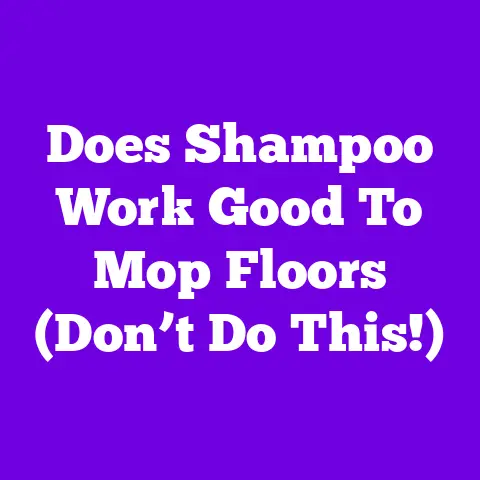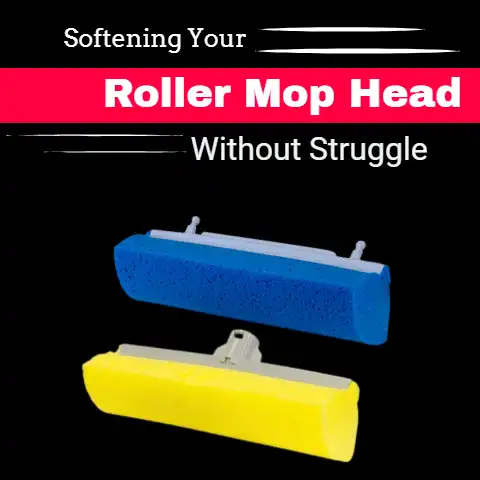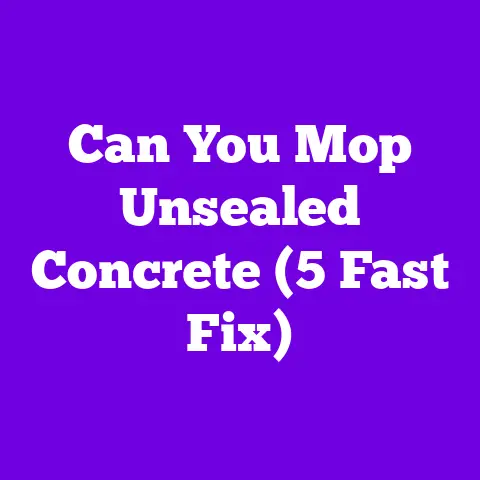Wrong Mopping Technique Prevents Dirt Pickup (Explained)
Keeping floors clean is an important part of maintaining a healthy home. However, using the wrong mopping technique can leave your floors dirtier than before you started. Properly mopping lifts and removes dirt, debris, and germs from the floor surface rather than just pushing them around.
Common Mopping Mistakes to Avoid
Using the wrong mopping preparation and technique can prevent dirt and debris pickup, leaving floors dirty and promoting the spread of germs. Here are some of the most common mopping mistakes to avoid:
Not Sweeping or Vacuuming First
Mopping over debris like dirt, crumbs, and pet hair just pushes it around the floor. Always sweep or vacuum floors before mopping to lift and remove loose dirt and debris. This prep work allows the mop to focus on removing stuck-on messes rather than just spreading surface-level debris.
Using a Dirty Mop Head
Mop heads naturally accumulate dirt, grime, and bacteria over time. Mopping with a dirty mop head transfers that unhygienic mess back onto the floor’s surface. Always launder reusable mop heads before each use and replace disposable mops frequently.
Not Pre-Treating Stains and Spills
Simply running a dry or damp mop over a dried spill will not effectively lift the stain. Pre-treat spots and stains with a cleaning solution matched to the type of mess before mopping. This helps break down and lift the stain so it can be removed.
Mopping Without a Cleaning Solution
Using only water without a cleaning solution does not effectively clean floors or sanitize properly. The cleaning agents in solutions lift, dissolve, and cut through grime that water alone cannot tackle. Add the appropriate cleaning solution to lift dirt and kill germs.
Not Wringing Out the Mop Enough
A sopping wet mop head will not pick up dirt effectively and can leave excess water that damages floors and takes forever to dry. Wring mops thoroughly before mopping and re-wring frequently throughout the process. You want the mop head moist, not dripping.
By avoiding these common mistakes and following proper mopping technique, you can effectively lift dirt while removing stains and killing germs on flooring surfaces throughout the home.
Step-by-Step Guide to Effectively Mop Floors
Follow these simple step-by-step instructions for mopping floors the right way:
1. Vacuum or Sweep Floors
Run a vacuum cleaner or broom over floors before mopping. This lifts and removes loose dirt, debris, pet hair, and other particles that can be picked up easily. Moving this mess out of the way allows the mop to focus on removing stuck-on dirt and stains.
2. Fill Mop Bucket with Warm Water and Cleaner
Fill a mop bucket, sink, or large bowl with warm, clean water. Water that is too cold will not effectively dissolve messes. Then add the appropriate amount of all-purpose cleaner or floor cleaning solution suited to your floor type.
Check manufacturer recommendations for finished hardwood or laminate floors which may require only water or specialized cleaners.
3. Submerge Mop Head and Wring Thoroughly
Dip the mop head into the water and cleaner mixture. Lift it straight up and wring it thoroughly using the mop’s wringer mechanism or by hand. The mop head should be moist but not dripping wet for most effective dirt pickup.
4. Mop in Sections Using Overlapping Strokes
Divide the floor visually into sections 3-4 feet wide to mop one at a time systematically. Use overlapping back-and-forth strokes as you progress through each section.
Overlap each stroke by a few inches to prevent missing spots in between strokes.
5. Rinse and Re-Wring Mop Frequently
Check the mop head after every few sections to ensure it is not overly dirty. Rinse, wring out thoroughly, and re-dip into the cleaning solution as needed to lift more dirt. The goal is to pick up dirt with each section, not spread accumulated grime around.
6. Let Floors Air Dry
When finished mopping the entire floor, rinse out mops and buckets thoroughly to prevent transfer of dirt and growth of bacteria. Where possible, open windows or use fans to allow floors to air dry rather than leaving moisture that could warp wood or nurture mold.
Be sure to launder reusable mop heads before re-use and follow a regular mopping schedule to prevent dirt buildup. Proper technique lifts up and removes mess while an inadequate approach just pushes it around.
Tips for Effective Floor Mopping
Follow these handy tips for making mopping easier and more effective:
Start with outer edges first – Wipe down baseboards, edges, and corners with a damp microfiber cloth before mopping the open floor space. This avoids spreading dirt to clean areas.
Use two buckets – Fill one bucket with cleaning solution for washing the floor, and keep a second rinse bucket with clean water for cleaning and wringing mops.
Try a spin mop – Spin mops with a foot pedal allow thorough wringing without using your hands. The centrifugal spinning extracts more water from the mop.
Work in the direction of light – Natural light from windows highlights any areas missed so you can see exactly where to focus the mop.
Go with the wood grain – On wood floors, make back-and-forth strokes in the direction of the wood grain to avoid streaks.
Dry floors with old towels – Place clean, dry towels under furniture legs and other objects to prevent water marks as floors dry.
Proper mopping technique lifts embedded dirt and stains for a deeper clean, while inadequate mopping pushes mess around. Follow these guidelines for floors that truly look clean!
Frequently Asked Questions About Mopping Floors
Still have questions about getting floors clean? Here are answers to some common mopping floor FAQs:
How often should I mop floors?
- Tile, vinyl, and linoleum – Once a week
- Hardwood – Every 2-4 weeks
- High-traffic areas – Increase frequency based on dirt buildup
What is the best mopping solution?
The best solution depends on your flooring type. All-purpose cleaners work for most tile, vinyl, laminate, and sealed hardwood. Avoid acidic cleaners on stone. See manufacturer guidelines for unfinished wood.
How do I sanitize floors while mopping?
Add 1⁄2 cup bleach diluted with 1 gallon of warm water for sanitizing power. Increase to 1 cup bleach for deep-cleaning gross messes. Never use straight bleach or acidic cleaners on wood floors.
Should I vacuum or sweep first before mopping?
Yes! Always vacuum or sweep floors first before mopping. Removing loose dirt allows the mop to focus on lifting up stuck-on stains rather than just pushing debris around.
How can I speed up drying time after mopping?
Open windows, use fans, and place clean towels under furniture legs and other objects to accelerate drying after mopping floors. Quick drying prevents water damage to wood and growth of mold on wet floors.
With the right mopping preparation, technique, cleaning solutions, and equipment you can effectively lift embedded dirt, stains, and allergens from your floors. Follow these guidelines for floors that truly look clean rather than just pushing mess around.






